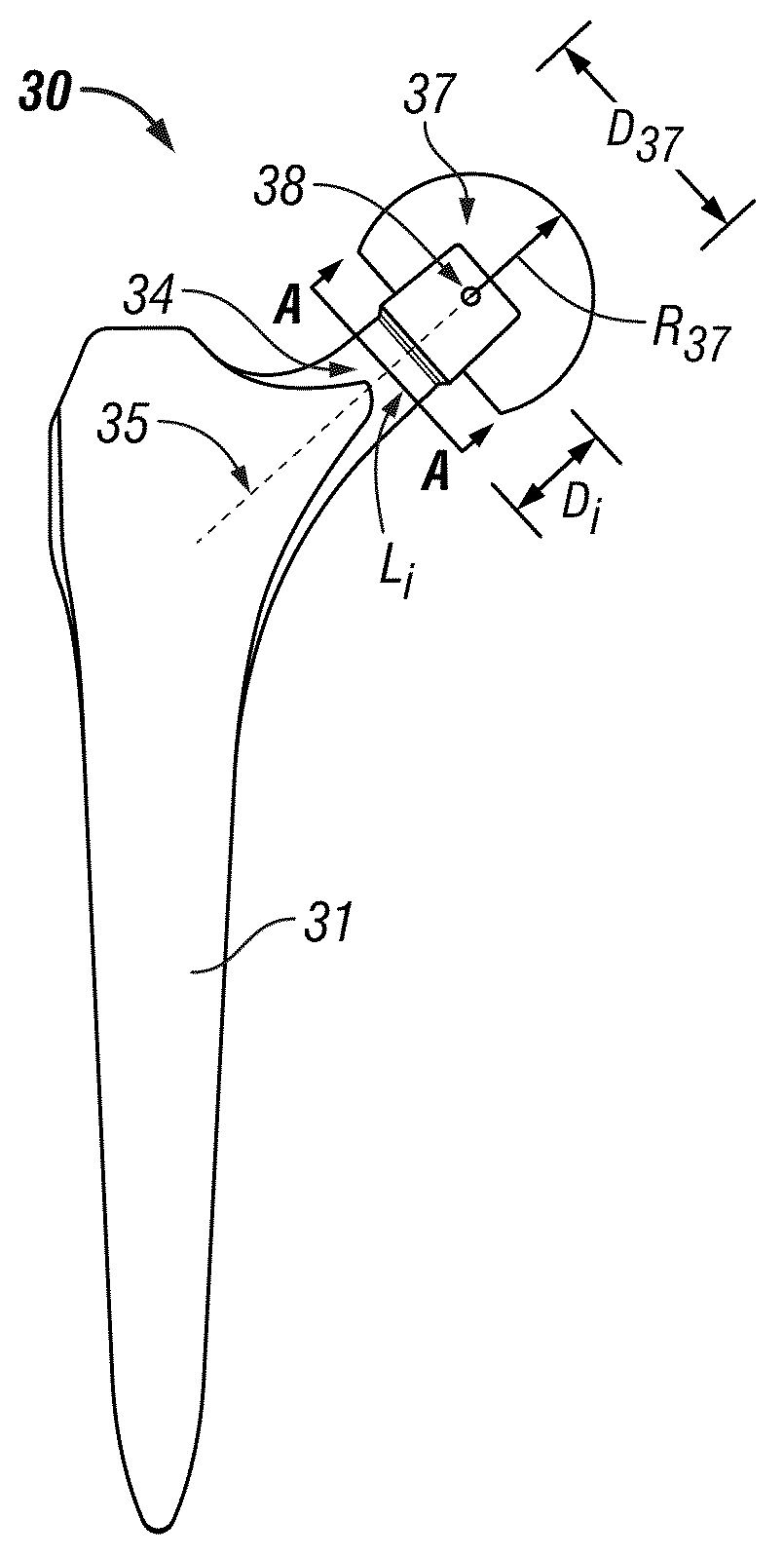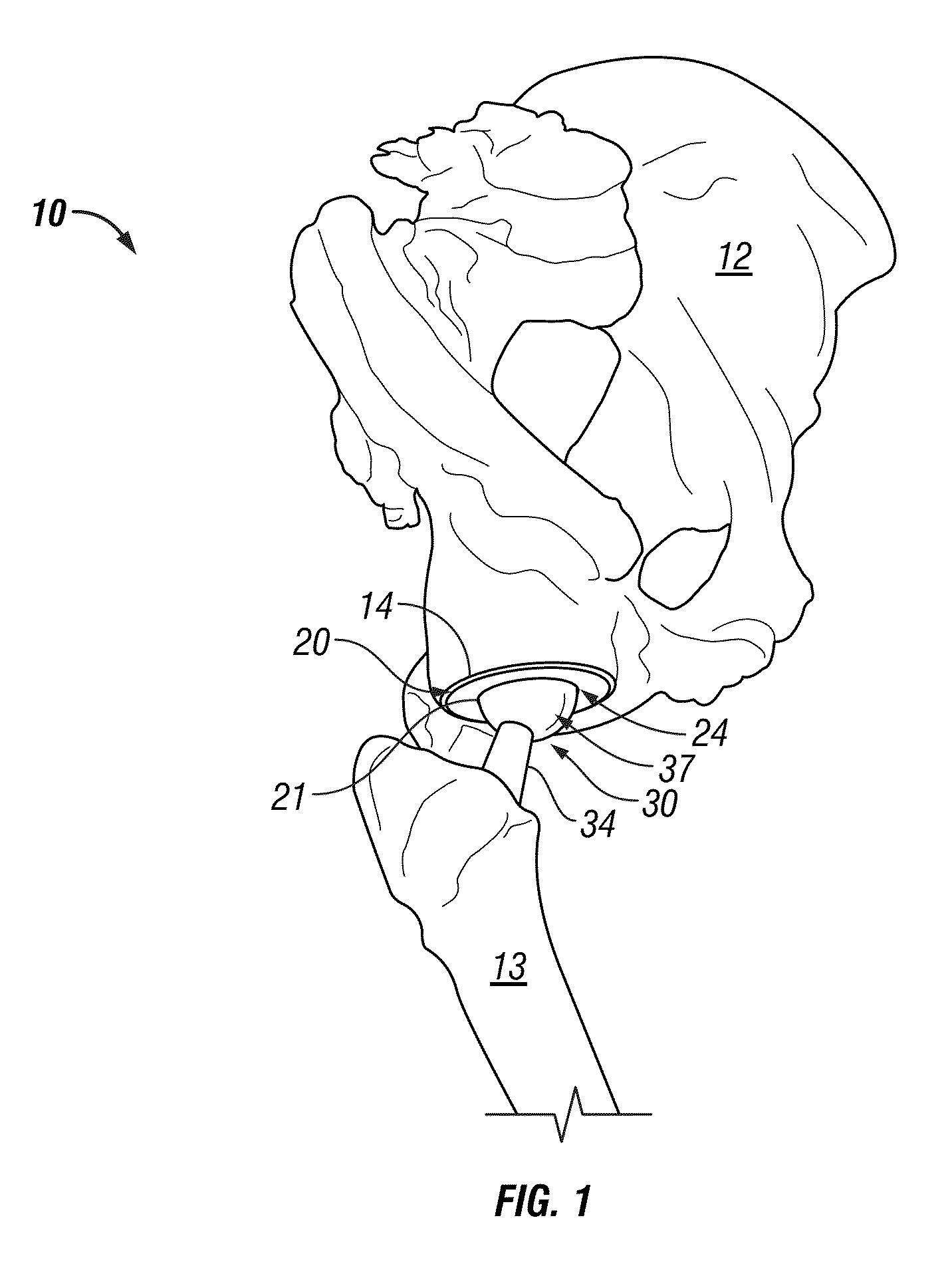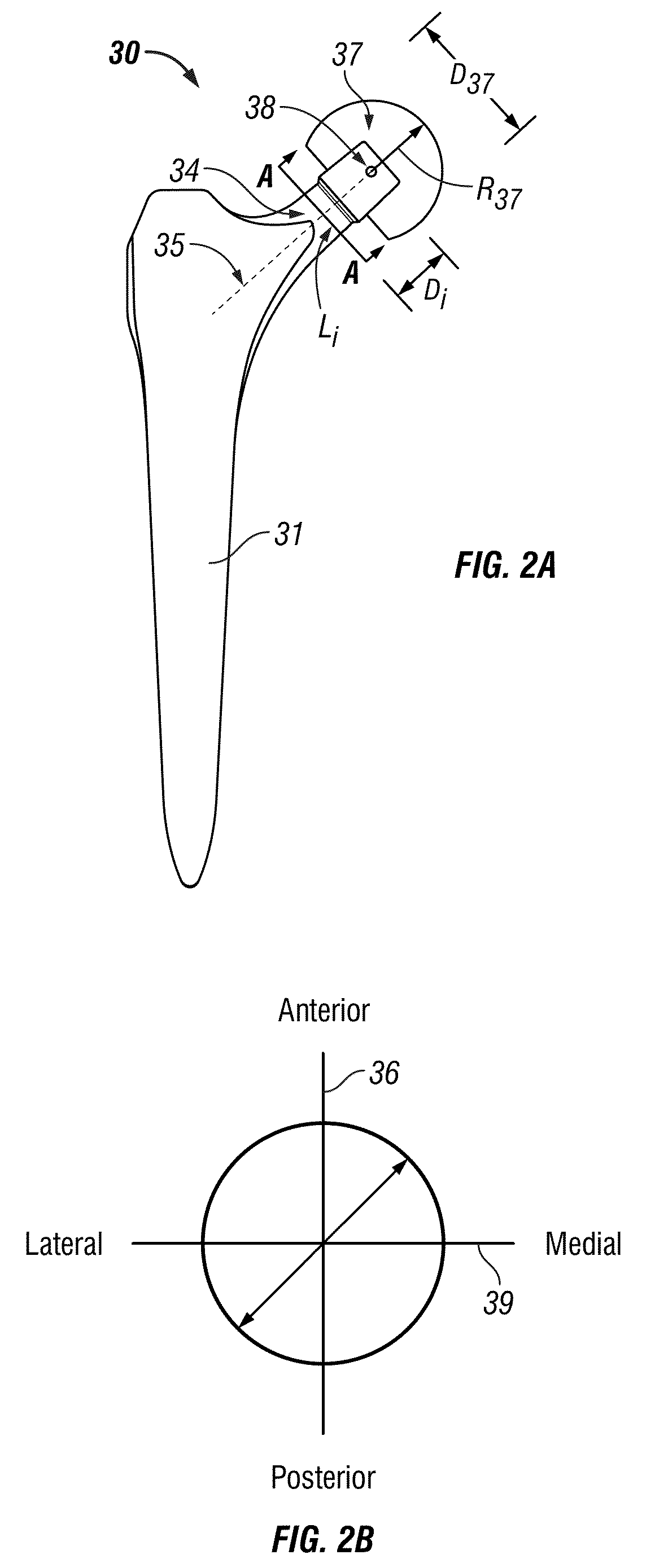Femoral Implant For Hip Arthroplasty
a technology of femoral implants and hip arthroplasty, which is applied in the field of implants, can solve the problems of rare practice results and the inability of most conventional hip prostheses to permit extreme maneuvers, and achieve the effect of improving range of motion and reducing thickness
- Summary
- Abstract
- Description
- Claims
- Application Information
AI Technical Summary
Problems solved by technology
Method used
Image
Examples
example 1
Range of Motion Comparison
[0064]The range of motion of embodiments of femoral necks designed in accordance with the principles described herein were also compared to a conventional 12 mm conical neck of similar strength. As shown in FIG. 10, the increase in range of motion of maneuvers highly susceptible to dislocation such as sit to stand and shoe-tying was about 5° and about 3°, respectively.
[0065]FIG. 10 also illustrates an apparent decrease in external rotation / extension maneuvers to prosthetic impingement during pivoting and rolling maneuvers of embodiments described herein compared to the conventional 12 mm neck. This difference is generally irrelevant, however, as both necks easily surpassed the limits of each maneuver as estimated by the experimental data. For example, normal patients considerably younger (and likely more flexible) than the typical total hip patient (49.7±5.0 yrs. vs. 65-70 yrs.) have limits of external rotation during rolling and pivoting still below those ...
example 2
Strength Analysis of Femoral Implant Design
[0066]Computer modeling and testing of a femoral neck constructed in accordance with the principles described herein was performed to ensure sufficient strength to pass the stringent ASTM standard F1612-95 described previously. A 3D computer model of the neck was placed on a standard stem model. The maximum stresses in the neck were calculated using finite element analyses, and were compared virtually with a conventional 12 mm conical neck known to have sufficient strength. Each model was meshed in 3D using tetrahedral elements (average size=1.0 mm). Each model was then positioned in 10° of adduction and 9° of flexion and constrained below the stem's osteotomy as required in ISO Standard 7206-6. A 5340N load was applied inferiorly to the center of the head using the worst case scenario for head offset (head position along the neck axis). As shown in FIG. 11, the maximum principal stresses and the maximum von Mises stresses were compared for...
PUM
 Login to view more
Login to view more Abstract
Description
Claims
Application Information
 Login to view more
Login to view more - R&D Engineer
- R&D Manager
- IP Professional
- Industry Leading Data Capabilities
- Powerful AI technology
- Patent DNA Extraction
Browse by: Latest US Patents, China's latest patents, Technical Efficacy Thesaurus, Application Domain, Technology Topic.
© 2024 PatSnap. All rights reserved.Legal|Privacy policy|Modern Slavery Act Transparency Statement|Sitemap



